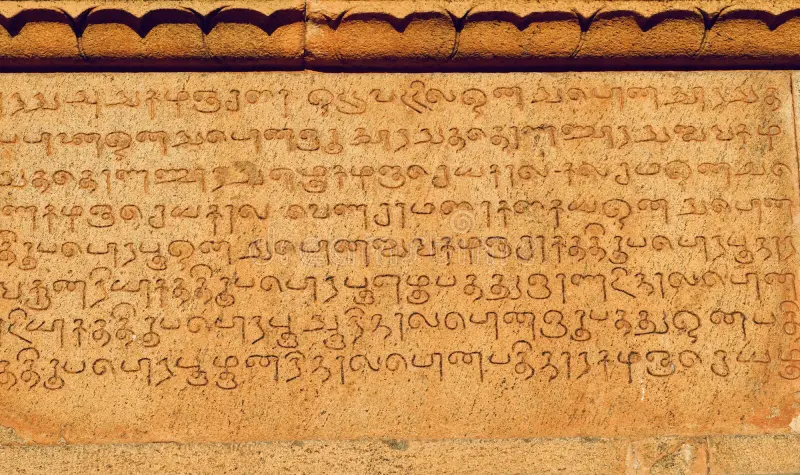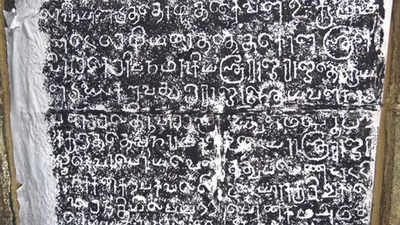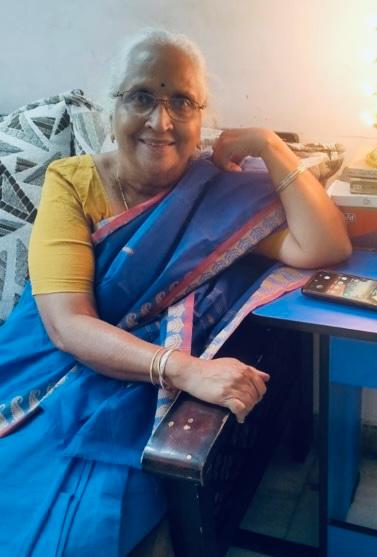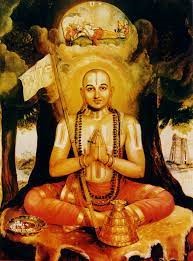Bhakti movement and the Temples
Dr Uma Shankari*
Temple building largely coincided with the rise of Bhakti movement in South India. It started around 7th century AD, and has continued till date. Bhakti movement was based on the view that the common family man can attain the highest state of spiritual consciousness through devotion and surrender to his chosen deity. Neither birth in a high caste nor ascetic austerities of the sanyasi were necessary to go to a temple and worship.
In south India, the saints who attained such high status, namely the 12 Alwars in Vaishnavism and the 63 Nayanmars in Saivism, came from different castes, including the untouchable caste (although this was a rare exception). They were revered in hagiographical treatises such as Periya Puranam. They provided the role models for spirituality for the common family man. They traveled widely and visited many temples and composed poems of praise on the deity of the temples they visited in the language of the region- Tamil, Kannada, Telugu, Malayalam. These temples are referred to as “temples which have been sung upon” by these saints. These devotional poems were recited in temples and homes.
In South India, the Bhakti movement in its early stages, was positioned in opposition to the ascetic sects /cults – Jainism, Buddhism and sanyasi tradition within Brahmanism. In the ascetic cults of Buddhism and Jainism, the world was seen as a sphere of suffering, desire being the root of suffering. The only way to freedom was through renunciation of desires, which meant leaving family life and practicing austerities and celibacy. Buddhism and Jainism had spread widely right upto Sri Lanka, and the far eastern countries during and after the period of king Asoka before the emergence of the Bhakti movement. The celibate monk – bhikku- enjoyed an exalted status, even more than the kings and Brahmins of earlier times. The laity was seen as supporters of monks and monasteries and had no role in the spiritual endeavor. The kings and the wealthy people gave grants of land and built monasteries for the monks. The later period from 5th century onwards witnessed a backlash against this trend of austere cults, and the Varna-Jati complex of Brahminical Hinduism re-asserted itself, following a very different philosophy and worship practices.
They upheld the dignity of the family man declaring there was no need for renunciation or austerities, and that devotion and surrender alone are enough to reach highest levels of spirituality. Renunciation was to be an inner journey, did not require an external expression. As we have already seen, the presiding deities of temples are often married gods with families. The annual temple festival usually celebrates the marriage of the deity with the consort and subsequently the pregnancy of the goddess.
The Saivite and Vaishnavite bhakti sects/cults of South India took it upon themselves to curb and contain the spread of these ascetic sects and cults. Persecution of the Jains and the Buddhists was not uncommon, quoted with pride in the poems and myths of the period.
But the Bhakti sects/cults went further. They also opposed the domination of the priestly class, the Brahmin caste, who by then had acquired a lot of clout and patronage from the kings and chiefs. The kings- from the Pallava times, continuing to Chola period, had settled Brahmins in fertile areas and villages and waived taxes on the agricultural lands donated to them. Waves of Brahmins came from the north and settled in the villages in South India in subsequent periods. The leading peasant- warrior communities, which had earlier enjoyed a high status, both as land holding farmers as well as for supplying soldiers to kings, fighting small scale wars with neighboring regions, were perhaps not happy with the undue clout of the Brahmins. The Bhakti philosophy undermined the dominance of the Brahmin priests in the sphere of spirituality even as it did not totally displace their caste position either inside the temple or outside.
In brief, the Bhakti movement introduced an all-inclusive concept of devotion and surrender to God, so that you can be a bhakta par excellence, never mind if you are from the lowest caste, or a dancing girl/prostitute or a hunter in a forest, or a house wife, or a king or a simple family man. The stories of Nayanmars and Alwars and others around the temples speak of the exemplary devotion shown by people from all of the above categories and the exalted spiritual status they attained. Even a Muslim princess (she is said to be Malik Kafur’s daughter) is said to have fallen in love with the idol of Vishnu at the Srirangam temple; the deity Ranganathar is said to have married her and she is deified in the temple as Tulukka Nachiyar in a painting (and not in the usual stone image, in deference to anti-idolatry position of Muslims) and her marriage with the deity is celebrated during the annual temple festival.
Another important development that happened due to the Bhakti movement was the fillip to vernacular languages instead of Sanskrit, which was essentially the language of the elites and the Brahmins. This process of composing the scriptures and devotional hymns in the spoken language of the region rather than in Sanskrit had already started with Buddhism and Jainism, and continued into later periods. It challenged the dominance of Sanskrit and the Brahmin caste as intermediaries to gods. The Tamil hymns/poems composed by Alwars and Nayanmars were collected and codified and made mandatory part of temple rituals and worship. These Tamil hymns were composed by the Saivite and Vaishnavite saints who were from different castes, not necessarily Brahmins. They could be sung by anyone belonging to any caste. Vernacularization of worship spread and continued in all the regions of India during the whole of the medieval period.
The Bhakti movement in South India has continued (till date) actively, through two major channels- Saivism and Vaishnavism, and the main material expression of it was through the temple. It not only threw open temple worship to all castes, but also gave them specific roles in the temple worship. It received gifts and donations from all castes and acknowledged their gifts suitably by inscribing the donations in copper plates and stone walls of the temples, distributing the offerings made to the deities to the functionaries and donors, and offering status and honour to them during daily worship and festivals.
Stone inscription at Brihadiswara temple at Thanjavur

As ordinary people thronged around the temples, the economy of the region boomed, bringing prosperity to the people and the rulers. No wonder the rulers showed a lot of interest in building temples, organizing temple festivals, promoting educational/cultural institutions as adjuncts to temples, and donating to them generously. Agamas and other philosophical treatises were composed as well as temple rituals were elaborated under the active or indirect support of the ruling classes. Music and dance, discourses of mythologies, Schools teaching the Vedas and Aagamas flourished.
In the later stages of the Bhakti movement, the institution of Hindu Sanyasi re-emerged in importance and Saivite and Vaishnavite monasteries came up and took over the management of temples. Sri Ramanuja took a keen interest in managing the temples. Several Saivite monasteries also came up and managed the temples eg. Dharmapura Aadheenam, Thiruvavaduthurai Aadheenam. They were often headed by non-Brahmins. They were given this charge as it was believed that having become sanyasis, they would have no interest in the wealth and properties of the temples. By this time some of the temples had accumulated a lot of wealth through gifts. With wealth, corruption, theft and robberies followed. Many temples have lost their gold, silver and other materials which had been donated.
The Bhakti movement spread to the different regions of South India. The Karnataka region saw the rise of the Veera Saiva movement led by Basavanna and other Vasana poets, as well as the Vaishnavite movement led by Madhvacharya during the 12 century onwards. North India witnessed its Bhakti movement from 15thcentury onwards through the Bhakti saints like Namdev, Surdas, Tulsidas, Kabir, Nanak, Raidas, Mira Bai and Chaitanya and various sects developed around them. They were a response to the spread of Islam, and like Islam they emphasized One God, and an abstract Nirguna Brahman. Some of them developed into cults around Ram and Krishna. It is interesting that almost all the above saints were born around the 15th century CE in different parts of North India and wrote and preached in the spoken vernacular languages.
The Bhakti movement of the North India differed from its counterpart in South India in one important respect: it was not centered around the localized manifestation of God in the neighborhood temple as in South India; it emphasized a universal God, more in tune with the conception of God in Islam. This is understandable as the ruling regimes of Muslims were opposed to idol worship and were even destroying temples and disfiguring idols. However, many Muslim rulers took a lenient view of the Hindus, and even granted lands and other concessions for building temples and religious endowments.
Impact of temple worship on society
The first historical record of a temple is to be found in Bihar, the Mundeswari temple. It is interesting that the historical record for this comes from a Sri Lankan source. It states that a royal pilgrims group or monks from Sri Lanka visited the place during their journey to Sarnath from Bodh Gaya through famous Dakshinapath highway and lost the royal seal of the Sri Lankan king, Duttagamani (101-77 BC), here.
In south India big temples started getting built by the kings of the Pallava dynasty (575 -900CE). Rock cut temples (at Mahabalipuram) and structural temples (in Kanchipuram) built with stones are the highlights of the Pallava period. State interest in temple building, adding new structures to existing temples, giving gifts and donations of materials to temples, participation in temple affairs as managers, continued through the periods of Chola, Pandya, Vijayanagara, Maratha rulers, right up to the British period. It is quite amazing that temple building and temple worship in South India has continued without breaks for so many centuries –from 6th century to 18th century and further till date.
Inscription recording donation to temple by a maid in the palace of Rajaraja Chola.

Many temples became ruins for whatever reasons, but new temples took their place. In fact, the famous Brahadiswara temple built by Rajaraja Chola in 10th century was in a state of ruin till it was discovered by the British and renovated. The same was the case of the grand temple built by his son Rajendra Chola in Gangaikonda Cholapuram. Today they have become functioning temples!
There are thousands of inscriptions carved in stone on the walls of temples and copper plates and documents, which record their munificence. Not only kings and nobles but also common people, including peasants, women, dancing girls, and maids gave generous gifts to temples out of devotion or/and as thanks -giving when they came out of a crisis in their lives. They have been studiously researched by historians to reconstruct the history of the regions and their people.
Local economy and people’s lives got organized around the bigger temples. Feeding the pilgrims and travelers free of charge was a common practice. Large endowments were made for the same purpose. Agricultural lands were gifted to the temples along with waiver of taxes (to the state in such lands) thus tying groups of peasants and landowners to the temples. Gifts of livestock, jewellery and other paraphernalia like lamps, oil for lamps, various services to the temples such as bringing water for the rituals, cooking food offerings, weaving cloth for the idols, maintaining the gardens and ponds for flowers, fashioning the flowers into garlands, maintaining cows for ghee, making stone and metal idols and other carvings, singing/playing musical instruments, drums, and dancing to entertain the deities, promoting education and learning of various sciences like the Vedas, Aagamas and associated subjects – all such activities brought various castes and groups of families into the service of the temples. A town came up around a big temple, which in turn encouraged building more temples in the same town. Tamil Nadu is full of many such temple towns with several famous temples – Srirangam, Kumbakonam, Thanjavur, Madurai, Chennai, Tirupati, Tiruchirapalli, etc.
Regional differences in temple construction and worship exist between different regions of South India. For instance, Krishna and Bhagavati temples are more common in Kerala, whereas Rama and Siva temples are more common in Andhra Pradesh. Siva and Vishnu temples are more common in Tamil Nadu. Throughout South India, temples to village gods and goddesses exist in every village.
Some temples have also emerged as major pilgrimage centres for granting specific boons to devotees as per their wishes; devotees may pledge a certain specific material as offering such as hair, a piece of garment, gold or silver, in return for a specific demand, such as success in an examination or a business venture, or cure for a disease, for infertility, etc.; and when it gets fulfilled, they visit and offer that specific offering to the deity. While this practice can be done in all temples, certain temples and deities are specially known for such practices, eg. Venkateswaraswamy temple at Tirupati, Murugan temple at Palani, Aiyappa temple in Kerala. A temple near the city of Hyderabad is believed to expedite granting of visas to foreign countries and aspiring visa candidates, sure enough, throng to that temple! Bhakti can do many things – it can get you a seat in heaven near the Lord-God or a seat in an airplane to go abroad!
*******
The previous five parts of the article can be seen on the given links –
Part 2 – History and Myths in Hinduism
Part 3 – Hinduism : Is it Sanathan?
Part 4 – Vedas to Puranas; Yajna to Puja
Part 5 – Is it Mandatory for a Hindu to Visit temples?
Part 6 – Come, Let’s Go Inside the Temple

*Dr Uma Shankari who has a doctorate in Sociology from the University of Delhi, has been associated with various social movements since early eighties. She has published a book in Tamil which is about the relation between temples and the Hindu religion and society.
Disclaimer: The views expressed in this article are the personal opinion of the author and do not reflect the views of raagdelhi.com, which does not assume any responsibility for the same.




Very informative. To acquire knowledge & informations could be said as timeless. More you know, more you are delighted.
Thanks for sending, Sir